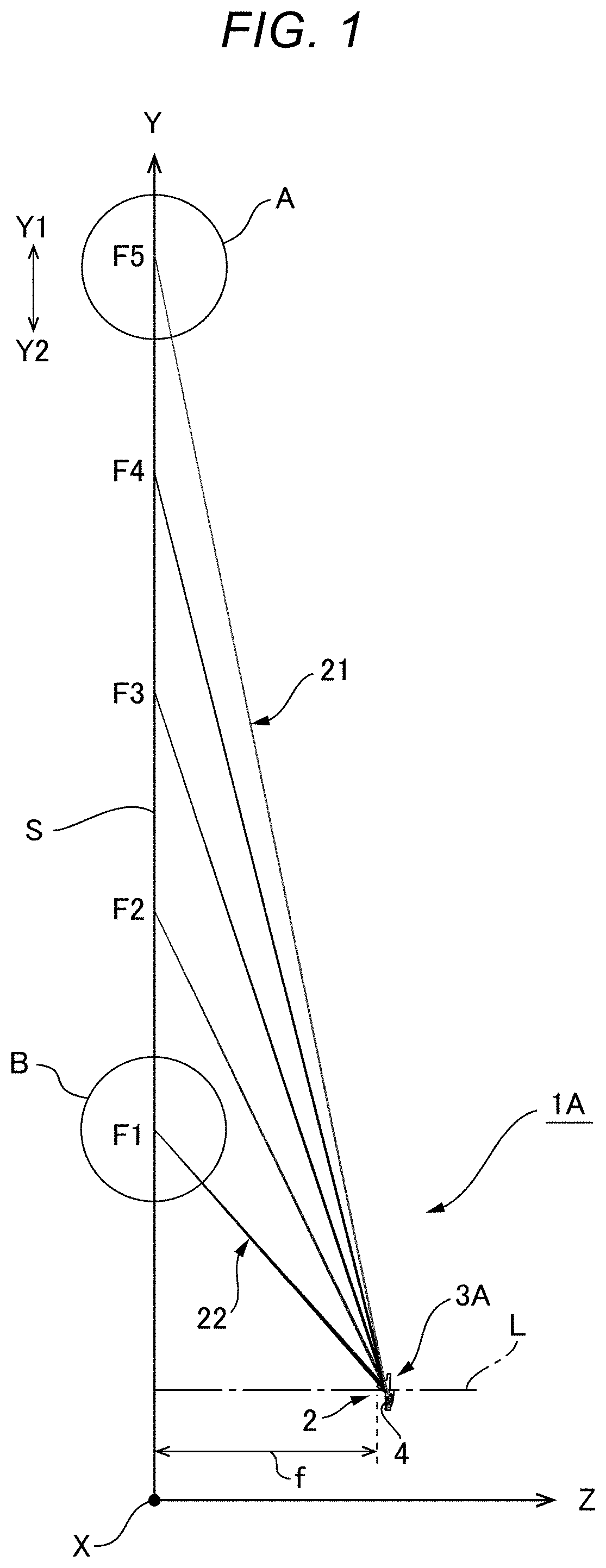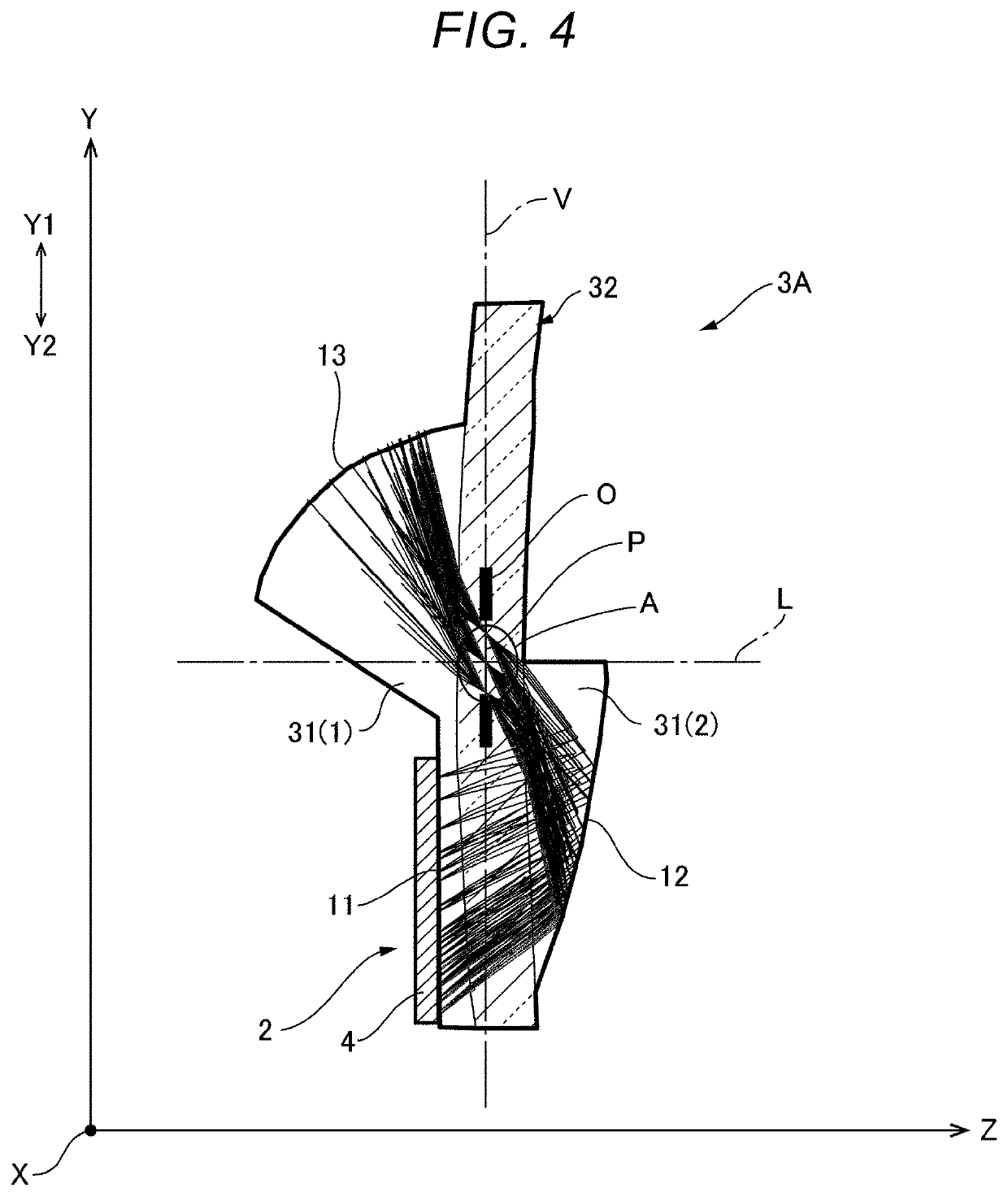Optical element and projection-type image display apparatus
- Summary
- Abstract
- Description
- Claims
- Application Information
AI Technical Summary
Benefits of technology
Problems solved by technology
Method used
Image
Examples
example 1
[0059]FIG. 1 is a light ray diagram showing the entirety of a projection-type image display apparatus according to Example 1 of the present disclosure. FIG. 2 is a partially enlarged view of the portion A in FIG. 1. The portion A is a largest image height portion and therearound on a screen in the direction along an axis Y. FIG. 3 is a partially enlarged view of the portion B in FIG. 1. The portion B is a smallest image height portion and therearound on the screen in the direction along the axis Y. The large image height portion A contains an image position farthest from the optical axis of an optical element and is an uppermost image position on the screen. The small image height portion B contains an image position nearest from the optical axis of the optical element and is a lowermost image position on the screen. FIG. 4 is a light ray diagram showing light rays traveling through the optical element. FIG. 5 describes an imaginary line specified in the optical element.
[0060]A proj...
example 2
[0101]A projection-type image display apparatus according to Embodiment 2 will next be described. FIG. 22 is a light ray diagram showing the entire projection-type image display apparatus according to Example 2. FIG. 23 is a light ray diagram showing light rays traveling through an optical element. FIG. 24 describes the imaginary line P specified in the optical element. In a projection-type image display apparatus 1B according to the present example shown in FIGS. 22 to 24 each viewed along the direction parallel to the axisX, the imaginary line P specified in an optical element 3B inclines with respect to the imaginary vertical line V, but the other configurations are the same as those of the projection-type image display apparatus 1A according to Embodiment 1. Configurations corresponding to those of the projection-type image display apparatus 1A according to Embodiment 1 therefore have the same reference characters.
[0102]The projection-type image display apparatus 1B according to...
example 3
[0131]A projection-type image display apparatus 1C according to Embodiment 3 will next be described. FIG. 32 is a light ray diagram showing the entire projection-type image display apparatus 1C according to Example 3. FIG. 33 is a light ray diagram showing light rays traveling through an optical element of the projection-type image display apparatus 1C according to Example 3. FIG. 34 describes the imaginary line P specified in the optical element. In the projection-type image display apparatus 1C according to the present example shown in FIGS. 32 to 34 each viewed along the direction parallel to the axis X, the imaginary line P specified in an optical element 3C inclines with respect to the imaginary vertical line V, but the other configurations are the same as those of the projection-type image display apparatus 1A according to Embodiment 1. Configurations corresponding to those of the projection-type image display apparatus 1A according to Embodiment 1 therefore have the same refe...
PUM
 Login to View More
Login to View More Abstract
Description
Claims
Application Information
 Login to View More
Login to View More - R&D
- Intellectual Property
- Life Sciences
- Materials
- Tech Scout
- Unparalleled Data Quality
- Higher Quality Content
- 60% Fewer Hallucinations
Browse by: Latest US Patents, China's latest patents, Technical Efficacy Thesaurus, Application Domain, Technology Topic, Popular Technical Reports.
© 2025 PatSnap. All rights reserved.Legal|Privacy policy|Modern Slavery Act Transparency Statement|Sitemap|About US| Contact US: help@patsnap.com



